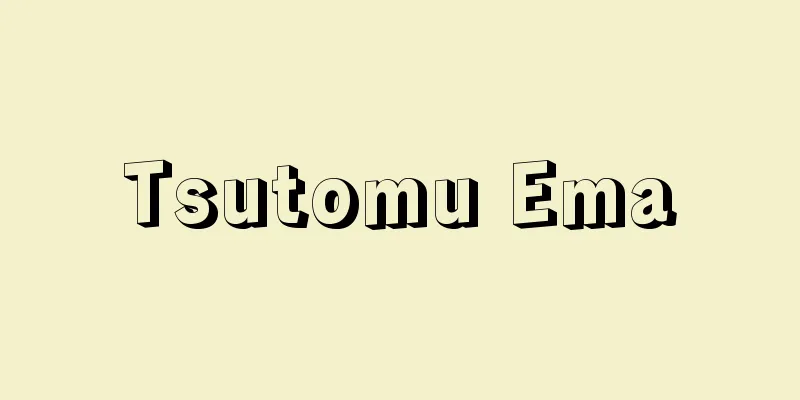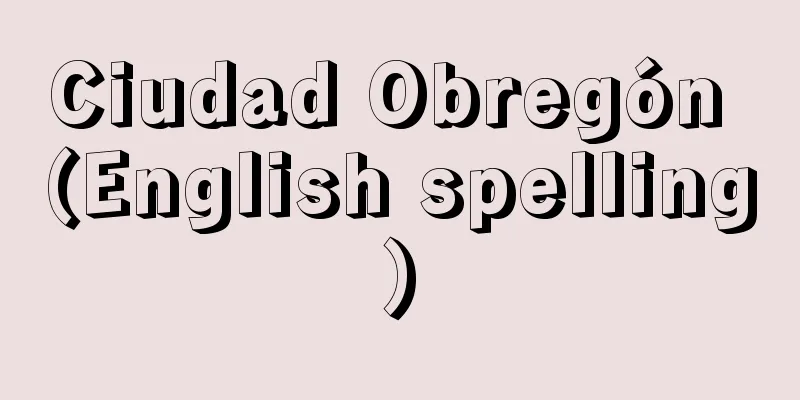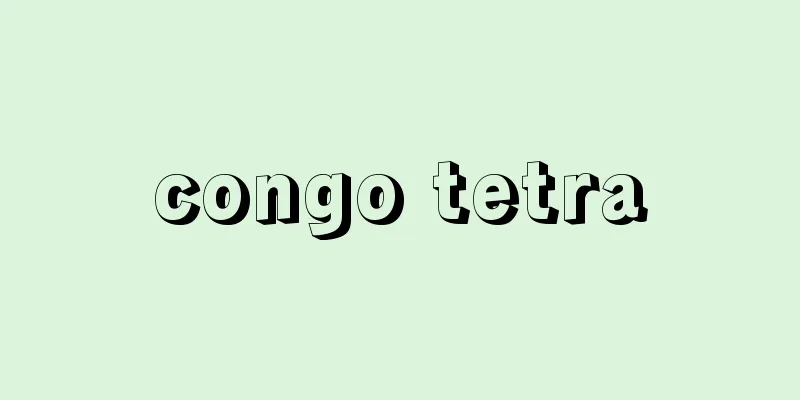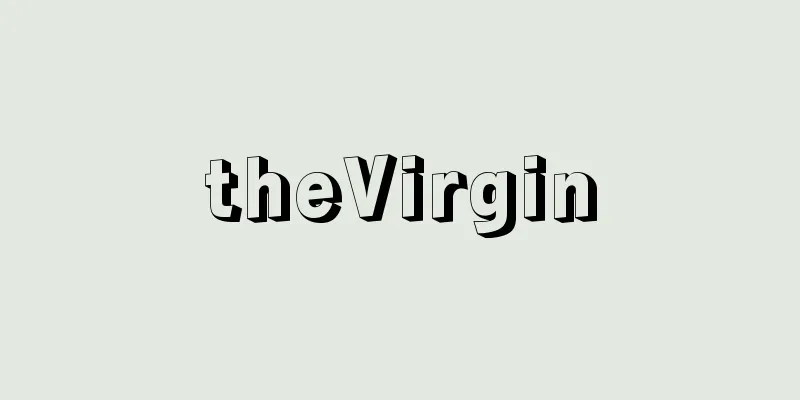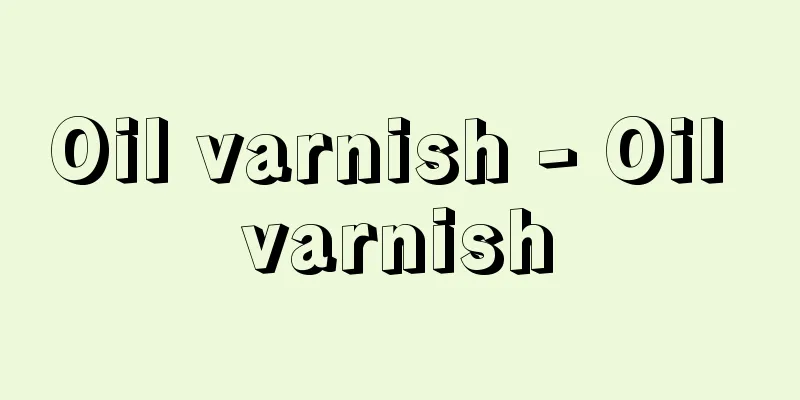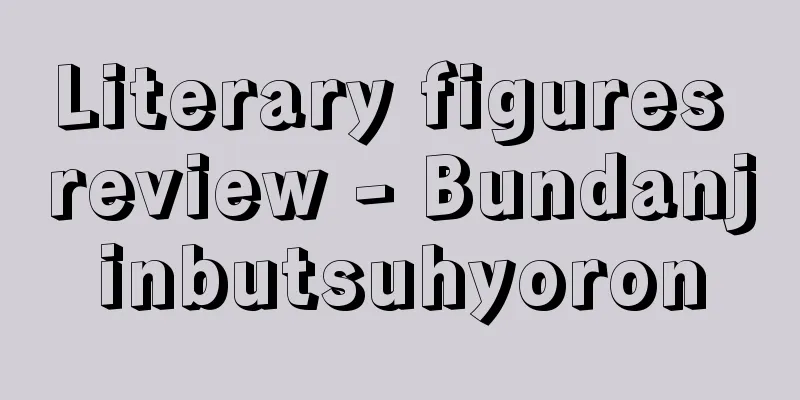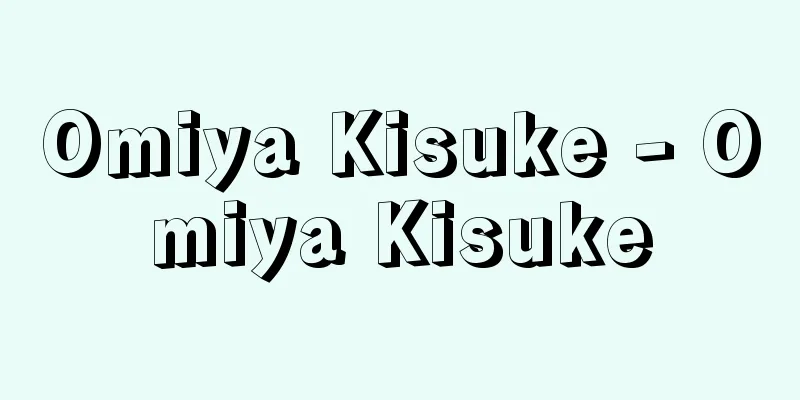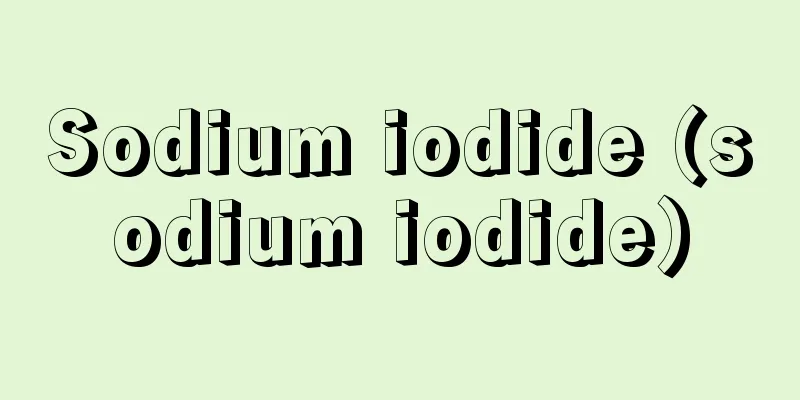Juvenile Prosecution - Shounen Shinpan

|
A trial held in a family court for a juvenile delinquent. In a broad sense, it refers to the entire process from when the family court accepts a juvenile case until it makes a final decision, and in a narrow sense, it refers to the process of hearings and choosing and deciding on treatment methods that take place in the trial room after the decision to start the trial. It is carried out in the juvenile trial department of the family court. The current juvenile law is based on the idea that in the case of a juvenile (person under 20 years old), rather than taking up and criticizing their past delinquency, protective measures should be taken with consideration of their future, and even for juveniles who have committed crimes, punishment should be limited to exceptional cases. There are three types of juveniles (delinquent juveniles) who should be tried as protection cases: juvenile delinquents (juveniles aged 14 or older who have committed a crime), juvenile delinquents (juveniles under 14 who have committed an act in violation of criminal laws), and juveniles at risk of committing a crime or an act in violation of criminal laws in the future, given certain circumstances and their character and environment. In principle, those under 14 years of age are entrusted to measures under the Child Welfare Act (such as temporary protection at a child consultation center), and protection cases are tried only when they have been referred by the prefectural governor or the director of a child consultation center. In addition, family courts may refer cases to public prosecutors and have them prosecuted for criminal prosecution only when they deem criminal punishment appropriate, if the juvenile is aged 14 or older and has committed an offense punishable by death, imprisonment, or incarceration (Juvenile Law, Article 20, Paragraph 1). [Shuichi Susuki and Akikazu Konishi September 15, 2015] procedureFamily courts start investigations based on notifications from guardians or members of the public, referrals from prefectural governors, child consultation center directors, police officers, or prosecutors, reports from family court investigators, etc., and if they find that a trial is necessary, they make a decision to start a trial (Juvenile Law, Article 21), and if they find that a trial is not necessary, they make a decision not to start a trial (Juvenile Law, Article 19, Paragraph 1). Investigations are conducted on the behavior, career, qualities, and environment of the juvenile, guardian, and related parties (Juvenile Law, Article 9), and when necessary to hold a trial, the juvenile may be placed under the custody of a family court investigator (temporary protection with physical custody), or may be referred to a juvenile classification home for scientific examinations of the juvenile's physical and mental condition. Trials are conducted in private by one judge (three in some cases) based on the results of these investigations. However, in addition to the guardian, attendant, and family court investigator, probation officers, probation officers, legal technicians at the juvenile classification home, and legal instructors may also attend and express their opinions with the court's permission. Furthermore, in certain cases involving juvenile delinquents, the prosecutor may be involved in the proceedings if necessary, and the victim or surviving family may attend the hearing if appropriate. If, as a result of the hearing, the family court determines that welfare or criminal measures are appropriate, it will make a decision to refer the case to the prefectural governor or the director of a child consultation center, or to the prosecutor, respectively. Except for these cases, if protective measures (probation, referral to a child independence support facility or child welfare facility, or referral to a juvenile prison) are necessary, it will make a decision to place the case under protective measures, or if not, it will make a decision not to take any measures (Articles 23 and 24 of the Juvenile Justice Law). When it is deemed necessary to decide on protective measures, it may conduct observation by a family court investigator (probationary observation) (Article 25, paragraph 1 of the Juvenile Justice Law). Article 1, paragraph 2 of the Juvenile Justice Law stipulates that "in the handling of investigations, hearings, and other protective cases, the court must always be cordial and sincere in its attitude in order to protect the juvenile's emotions, and must endeavor to naturally gain the trust of the juvenile and his/her guardian, etc." In addition, with regard to cases involving juvenile delinquents, reporting that would lead one to infer who committed the crime is prohibited (Article 61 of the same law; no penalties). Unlike criminal cases, in protective custody cases, various protective measures are already taken on the individual from the investigation stage (such as placement on probation). Therefore, protective measures and non-prosecution decisions are different in nature from verdicts of guilty or not guilty in criminal cases. However, when a protective measure decision is made on a juvenile delinquent, criminal prosecution cannot be brought or the case cannot be referred to a family court for adjudication again (Juvenile Law, Article 46, Paragraph 1). [Shuichi Susuki and Akikazu Konishi September 15, 2015] Trends in legal reformIn the 1993 "Yamagata Mat Death Case" (a case in which a junior high school student was allegedly suffocated to death by a gym mat as a result of bullying), a juvenile who had been found "not to have committed any delinquency" by the family court and not taken any action was found to have "conducted delinquency" in an appeal hearing (at the high court) for another juvenile involved in the case (who had been sent to a juvenile training school by the family court). Also, in 1997, the "Kobe Serial Child Murders" occurred (a case in which a 14-year-old boy injured three elementary school students and killed two). These cases triggered a growing trend for reform of the Juvenile Law, including the need to allow prosecutors to be involved in trials to improve the fairness of delinquency determinations, lowering the age at which cases can be referred to prosecutors (the age at which punishment can be imposed) from 16 to 14 to address the trend of juvenile crimes becoming younger and more violent, and the possibility of disclosing information about juvenile trials to victims (and their surviving families). A revised Juvenile Law reflecting these changes was enacted in November 2000 (Heisei 12) through a parliamentary bill (effective April 2001). In addition, in May 2007, the minimum age for referral to a juvenile prison was lowered from "14" to "approximately 12." After that, the Juvenile Law was amended again in June 2008, with the view that information about juvenile trials should be made more widely available to victims and their surviving families, and a system for victims and their surviving families to observe juvenile trials was introduced (effective December of the same year). Furthermore, the Juvenile Law was amended in April 2014 to expand the scope of cases in which prosecutors are permitted to be involved (enforced in June of the same year). [Shuichi Susuki and Akikazu Konishi September 15, 2015] Saito Toyoji, Juvenile Law Research 1: Due Process and Relief from Miscarried Convictions (1997, Seibundo) ▽ Araki Shinichi, editor, Determination of the Facts of Delinquency (1997, Kobundo) ▽ Moriya Katsuhiko, Modern Delinquency and Juvenile Proceedings (1998, Keiso Shobo) ▽ Araki Shinichi, editor, Modern Juveniles and the Juvenile Law (1999, Akashi Shoten) ▽ Ishikawa Masaoki, Sone Takehiko, Takahashi Norio, Taguchi Morikazu, Moriyama Tadashi, Juvenile Delinquency and the Law (2001, Seibundo) ▽ Inose Shinichiro, Morita Akira, Saeki Hitoshi, editors, New Developments in Juvenile Law: Theory, Procedure, Treatment (2001, Yuhikaku) ▽ Saito Toyoji and Moriya Katsuhiko (eds.), Issues and Prospects of Juvenile Law 1 & 2 (2005, 2006, Seibundo) ▽ Saito Toyoji, Juvenile Law Research 2: Considering Revision of the Juvenile Law (2006, Seibundo) ▽ Sawanobori Toshio and Takauchi Hisao, The Principles of Juvenile Law (2010, Gendaijinbunsha) ▽ Fujiwara Masanori, Tackling Juvenile Cases: From the Frontline as a Family Court Investigator (Iwanami Shinsho) [Reference] | | | | | | | | | | | | | | |Source: Shogakukan Encyclopedia Nipponica About Encyclopedia Nipponica Information | Legend |
|
家庭裁判所において非行少年の事件に対して行われる審判。広義では、家庭裁判所が少年事件を受理してから終局決定をするまでの全過程をいい、狭義では、審判開始決定以後、審判廷において行われる審理、処遇方法の選択・決定の過程をいう。家庭裁判所の少年審判部で行う。現行少年法は、少年(20歳未満の者)の場合、その過去の非行を取り上げてこれに非難を加えるよりは、本人の将来を考え、これに保護的な処置を講じ、罪を犯した少年についても、刑は例外的に行うにとどめるべきであるという思想にたっている。保護事件として審判に付すべき少年(非行少年)は、犯罪少年(14歳以上で罪を犯した少年)、触法少年(14歳未満で刑罰法令に触れる行為をした少年)、虞犯(ぐはん)少年(一定の事由があって、かつその性格・環境に照らし将来罪を犯し、または刑罰法令に触れる行為をする虞(おそれ)のある少年)の三者であるが、14歳未満の者は原則として児童福祉法上の措置(児童相談所の一時保護など)にゆだねられ、都道府県知事または児童相談所長からの送致があった場合に限り保護事件として審判することになっている。また、家庭裁判所は、少年が14歳以上で死刑・懲役・禁錮にあたる罪を犯した場合に限り、刑事処分を相当と認めるときに、事件を検察官に送致し、これを刑事訴追にゆだねることができる(少年法20条1項)。 [須々木主一・小西暁和 2015年9月15日] 手続家庭裁判所は、保護者・一般人からの通告、都道府県知事・児童相談所長・警察官・検察官からの送致、家庭裁判所調査官からの報告などによって調査を開始し、その結果、審判が必要であると認めれば審判開始決定をし(少年法21条)、その必要なしと判断すれば、審判不開始決定をする(同法19条1項)。調査は、少年・保護者・関係人の行状・経歴・素質・環境などについて行い(同法9条)、審判を行うために必要があるときには、家庭裁判所調査官の観護(身柄の保全とともに暫定的な保護)を行うことにし、あるいは少年鑑別所に送致して少年の心身の状況について科学的な鑑別の方法による検査を行わせる。審判は、これらの調査の結果に基づいて、1人(一部の事件では3人)の裁判官が非公開で行う。ただし、保護者・付添人・家庭裁判所調査官のほか、保護観察官・保護司・少年鑑別所法務技官および法務教官も出席し、裁判所の許可を得て意見を述べることができる。さらに、一定の犯罪少年の事件では、必要性が認められる場合に検察官も手続に関与することができ、また、相当性が認められる場合に被害者や遺族も傍聴することができる。家庭裁判所は、審理の結果、福祉処分または刑事処分が相当な場合には、それぞれ都道府県知事・児童相談所長送致決定または検察官送致決定を行う。そして、これらの場合を除き、保護処分(保護観察、児童自立支援施設・児童養護施設送致、少年院送致)に付する必要があれば保護処分決定を、その必要がなければ不処分決定を行う(同法23条・24条)。保護処分を決定するため必要があると認めるときは、家庭裁判所調査官の観察(試験観察)を行うことができる(同法25条1項)。少年審判規則第1条2項は「調査及び審判その他保護事件の取扱に際しては、常に懇切にして誠意ある態度をもって少年の情操の保護に心がけ、おのずから少年及び保護者等の信頼を受けるように努めなければならない」と規定する。なお、非行少年の事件については、その事件を行った本人を推知させる報道が禁止されている(同法61条。罰則なし)。 保護事件では、刑事事件の場合と異なり、すでに調査の段階から本人に対し種々の保護的措置がとられている(試験観察中の補導委託など)。そのため、保護処分決定・不処分決定は、刑事事件における有罪・無罪の判決とは性格を異にするものである。ただし、犯罪少年について保護処分決定をした場合には、審判を経た事件について、刑事訴追をし、またはふたたび家庭裁判所の審判に付することはできない(少年法46条1項)。 [須々木主一・小西暁和 2015年9月15日] 法改正の動向1993年(平成5)の「山形マット死事件」(いじめにより中学生が体育用マットで窒息死したとされる事件)では、家庭裁判所が「非行事実なし」の不処分決定をした少年について、この事件に関連するほかの少年(家庭裁判所で少年院送致決定)の抗告審(高等裁判所)において、先の少年にも「非行事実あり」の判断が示されるような事態を生じた。また1997年には「神戸連続児童殺傷事件」(当時14歳の少年が小学生3人に傷害を与え、2人を殺害した事件)が発生した。これらの事件をきっかけに、非行事実認定の適正化のために審判への検察官の関与を認める必要性、少年犯罪の「低年齢化」「凶悪化」に対処するために事件の検察官送致可能年齢(処罰可能年齢)の16歳から14歳への引下げ、被害者(その遺族)に対する少年審判の情報開示の可否、など少年法改正の気運が高まり、これらが反映された改正少年法が2000年(平成12)11月に議員立法により成立した(2001年4月施行)。また2007年5月には少年院送致年齢の下限が「14歳」から「おおむね12歳」に引き下げられた。その後も、被害者や遺族に対する少年審判の情報開示をさらに拡大すべきであるとして、2008年6月に少年法がふたたび改正され、被害者や遺族による少年審判の傍聴制度などが導入された(同年12月施行)。さらに、2014年4月にも少年法が改正され、検察官の関与が認められる対象事件の範囲も拡大されることになった(同年6月施行)。 [須々木主一・小西暁和 2015年9月15日] 『斉藤豊治著『少年法研究1 適正手続と誤判救済』(1997・成文堂)』▽『荒木伸怡編著『非行事実の認定』(1997・弘文堂)』▽『守屋克彦著『現代の非行と少年審判』(1998・勁草書房)』▽『荒木伸怡編著『現代の少年と少年法』(1999・明石書店)』▽『石川正興・曽根威彦・高橋則夫・田口守一・守山正著『少年非行と法』(2001・成文堂)』▽『猪瀬愼一郎・森田明・佐伯仁志編『少年法のあらたな展開――理論・手続・処遇』(2001・有斐閣)』▽『斉藤豊治・守屋克彦編著『少年法の課題と展望1・2』(2005、2006・成文堂)』▽『斉藤豊治著『少年法研究2 少年法改正の検討』(2006・成文堂)』▽『澤登俊雄・高内寿夫著『少年法の理念』(2010・現代人文社)』▽『藤原正範著『少年事件に取り組む――家裁調査官の現場から』(岩波新書)』 [参照項目] | | | | | | | | | | | | | | |出典 小学館 日本大百科全書(ニッポニカ)日本大百科全書(ニッポニカ)について 情報 | 凡例 |
Recommend
Gracia - Gracia
⇒Hosokawa Gracia Source: Kodansha Digital Japanese...
Ecstatic
In Sanskrit, it is called bhavāgra, and in the Bu...
incorporation
As evidence, Freud cited the fact that infants ex...
Ortyxelos
...They live in a common habitat, but are difficu...
Viscount Mauá (English spelling)
1813‐89 Brazilian businessman and member of the Ho...
Cohort - kohoto (English spelling) cohort
A demographic term referring to a population grou...
Bukka
…It was succeeded by four different royal lines: ...
dandy
...Generally, it means a man's "perfect ...
Kichi - Kichi
... Dinka society is divided into tribes of vario...
Vernier caliper
A measuring tool that uses a graduated scale and ...
Umm Durman
...A city in Khartoum Governorate, Republic of Su...
Metallization phenomenon
…The skin at the entrance and exit of the electri...
General participation system
...This is the case with the common income system...
Onkoku
…There are also cases where the hot spring itself...
Skewer - Kushizashi
〘noun〙① The act of piercing something with a comb....
